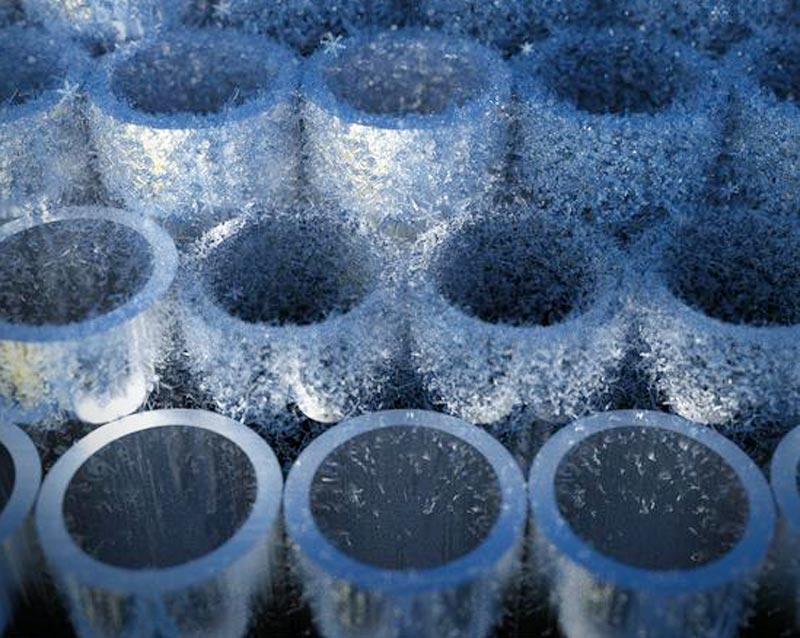

Metallic solid-state refrigerant tubes used for elastocaloric cooling, an environmentally friendly refrigeration technology.
Credit: Jiaqi Dai/Maryland Engineering
Air conditioning, refrigeration, and other cooling technologies account for more than 20 percent of today’s global energy consumption, while the refrigerants they use have a global warming potential thousands of times greater than carbon dioxide. In a recent study in the journal Science, a team led by Maryland Engineering Professors Ichiro Takeuchi, Reinhard Radermacher, and Yunho Hwang introduced a high-performance elastocaloric cooling system that could represent the next generation of cooling devices.
Takeuchi calls it “a completely different, completely green, environmentally friendly cooling technology, which bypasses chemical refrigerants to essentially rely on pushing and pulling pieces of metal to create cooling.” Caloric materials—including magnetocaloric, electrocaloric, and elastocaloric materials—can undergo phase transition and release, and absorb heat upon application of various fields and mechanical forces. The key feature is the compression and release of fatigue-resistant nickel-titanium (NiTi) tubes configured in a versatile, multimode heat exchange architecture.
“More than a decade ago, we were just playing with a NiTi wire,” Takeuchi said. “By stretching it, you could get a substantial cooling effect one could feel by hand. That was when we started thinking about applying the concept to a cooling device.” The lab’s subsequent work has been funded by the U.S. Department of Energy for more than a decade.
The team says it’s possible to improve the performance of its system enough to make the technology commercially viable within several years. A current prototype can produce 200 watts of cooling capacity, enough to power a compact wine fridge, with plans to expand to window units, whole-house cooling systems, and commercial HVACs eventually.
The A. James Clark School of Engineering at the University of Maryland serves as the catalyst for high-quality research, innovation, and learning, delivering on a promise that all graduates will leave ready to impact the Grand Challenges of the 21st century. The Clark School is dedicated to leading and transforming the engineering discipline and profession, to accelerating entrepreneurship, and to transforming research and learning activities into new innovations that benefit millions.
Journal: Science
DOI: 10.1126/science.adg7043
Article Title:High-performance multimode elastocaloric cooling system
Article Publication Date: 18-May-2023












